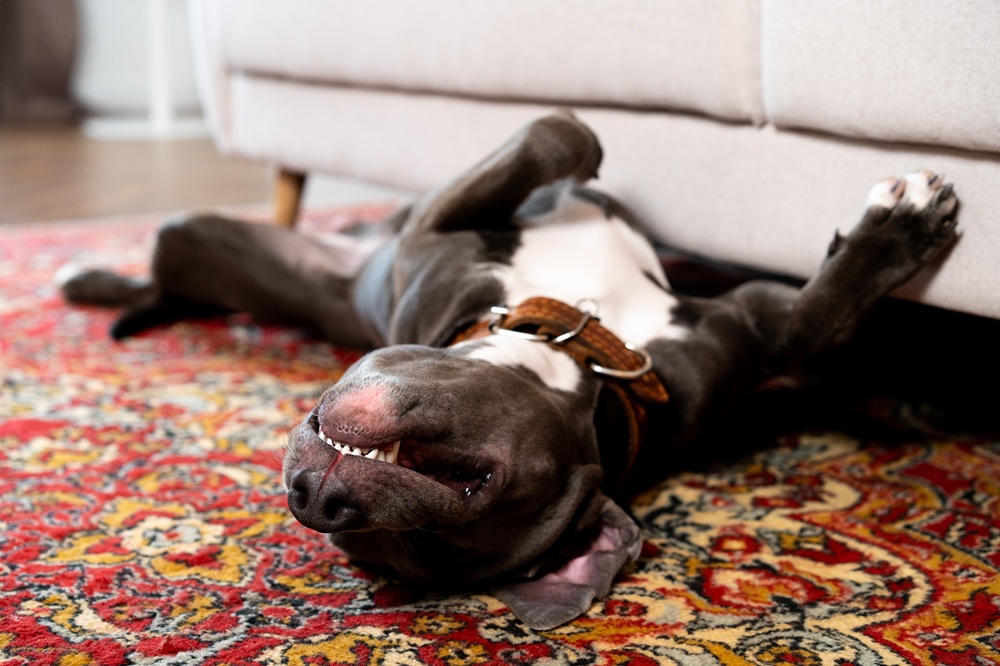Did you know that oriental rugs are traditionally woven by hand in countries across the Middle East, Central Asia, and parts of China and India? These rugs are cultural heirlooms, crafted with care and intended to last for generations. That’s exactly why so many rug owners feel nervous when it comes time to clean them. And honestly, they have a right to be cautious.
Oriental rugs are nothing like your average area rug from a department store. Each knot is tied by an artisan who may spend months (sometimes years) bringing intricate patterns to life. And so before attempting any type of cleaning, it's crucial to learn what makes these rugs so delicate, and what could go wrong if you're not careful.
Let’s start with these 7 basics every oriental rug owner should know before breaking out the vacuum cleaner.
1 of 7 | They Are Often Made from Natural Fibers
Oriental rugs are commonly woven from natural fibers like wool, silk, and cotton. Although natural fibers add to the beauty and durability of these rugs, they also raise the stakes when it comes to maintenance.
Unlike synthetic carpets or rugs, these organic materials require more thoughtful care because they react differently to moisture, heat, and cleaning agents. So if you're not sure what your rug is made of, it’s a good idea to check the label or consult a professional before attempting any kind of cleaning.
Key Facts About Natural Rug Fibers
- Wool is the most common fiber in Oriental rugs and has natural lanolin oils that repel dirt but can be stripped away by harsh detergents.
- Silk offers a fine, glossy finish, but it's extremely delicate and prone to water spotting, dye bleeding, and fiber degradation if handled improperly.
- Cotton, usually used in the foundation or backing, is absorbent and can harbor mildew if it’s not dried thoroughly after cleaning.
- Natural fibers require pH-balanced cleaners, low moisture, and controlled drying - no shortcuts.
- Always perform a fiber test or seek a professional opinion if you're unsure of your rug’s materials.
2 of 7 | The Dyes Can Be Unstable
One of the most common problems with Oriental rug cleaning is dye bleeding. Many of these rugs are hand-dyed using vegetable-based or natural dyes that aren’t colorfast under certain conditions. If you apply water or cleaning agents without testing first, you might end up with a rug full of smudged patterns and dull colors. Once a dye bleeds, there’s rarely a way to fix it completely.
How to Manage Dye Sensitivity
- Do a dye test before cleaning: Dampen a white cloth with water and gently press it to a hidden area of the rug. If color transfers, the dyes are not stable.
- Avoid alkaline or high-pH cleaners: These can strip dye and distort patterns, especially in reds and blues.
- Never use bleach or oxidizing agents: These are too aggressive for hand-dyed wool or silk and will likely cause permanent damage.
- Always dry rugs flat and quickly: Extended moisture exposure can make unstable dyes migrate across fibers.
3 of 7 | They’re Prone to Abrasive Damage
Oriental rugs have a tight weave and fine fibers, which makes them vulnerable to surface damage from scrubbing, rough brushes, or even certain vacuums. Many well-intentioned homeowners damage their rugs trying to “deep clean” them by over-agitating the pile. This can wear away designs, dull the texture, and drastically shorten the rug’s lifespan.
How to Avoid Abrasive Wear and Tear
- Avoid stiff brushes or scouring pads: Use soft sponges or microfiber cloths for any manual cleaning.
- Turn off the vacuum beater bar: Always use suction-only vacuuming to remove surface dust without pulling fibers.
- Never scrub stains aggressively: Blot stains gently from the outside in using an absorbent towel.
- Rotate rugs regularly: This helps reduce uneven wear patterns from foot traffic or furniture placement.
- Use rug pads on hardwood floors: They reduce movement and friction while offering extra cushioning.
4 of 7 | Pet Stains and Moisture Can Cause Irreversible Harm

Pet urine, spills, and high humidity don’t just leave a stain – they can seep into the rug’s foundation and cause mildew, mold, and permanent fiber breakdown. The acid and salt content in pet urine is particularly aggressive, and if it sits too long, it can chemically burn the fibers and attract further soiling. Even water from a spill or humid air in your home can lead to mildew if not dried quickly and thoroughly.
Handling Pet Accidents and Moisture the Right Way
- Act immediately: Blot (not scrub) the area using white paper towels or a clean cloth. Avoid pressing the stain deeper into the pile.
- Use enzyme-based cleaners: These are designed to break down the bacteria and proteins in pet waste, but always test in an inconspicuous area first.
- Never use hot water: Heat can set the stain and make odors worse.
- Dry thoroughly: Use a fan, dehumidifier, or compressed air to speed up the drying process. Avoid letting the rug stay damp for more than a few hours.
- Call a professional if the stain has set: Deep cleaning may be the only option if the stain has soaked through the foundation.
5 of 7 | Cleaning Methods Must Match the Rug's Construction
Every Oriental rug is built differently. The density of the knots, the type of backing, the length of the pile, and the combination of fibers all play a role in what kind of cleaning method is safe. Some rugs can handle full immersion washing, while others like antique silk rugs, require extremely delicate surface cleaning only.
Important Things to Keep in Mind
- High-knot-count wool rugs (like Persian or Tabriz) may do well with controlled immersion cleaning when managed by a specialist.
- Silk or silk-blend rugs should be spot-cleaned using minimal moisture and dried immediately to prevent water stains.
- Flat-weave kilims can sometimes be gently hand-washed, but their colorfastness must be tested first.
- Cotton foundation rugs absorb water easily and need to be dried rapidly to avoid mildew.
- Rugs with glued backings should never be soaked - moisture can dissolve the adhesive.
6 of 7 | They Should Never Be Machine Washed
No matter how durable your rug looks, throwing it into a washing machine is asking for disaster. Most Oriental rugs are hand-knotted and not constructed to endure the mechanical agitation or spin cycle of a home washer. The rug can lose shape, fray at the edges, or have its foundation unravel completely. And don’t even think about using a dryer – the heat can shrink or harden natural fibers beyond repair.
Why Machines Are a No-Go for Oriental Rugs
- Agitation is too rough: The movement can break down knots and fringes, especially for older or antique pieces.
- Temperature control is limited: Even warm water can trigger dye bleeding or fiber distortion.
- Excessive moisture leads to mildew: Home machines don’t dry thick rugs thoroughly, creating a risk for hidden mold.
- The spin cycle pulls at the rug’s structure: This can cause wrinkling, stretching, or separation of the backing.
If you’re looking for local help, search for professional area rug cleaning near your area and make sure they explicitly state that they hand-clean or professionally wash Oriental rugs.
7 of 7 | Professional Cleaning Is Recommended Every 1–3 Years
Even if your Oriental rug looks clean on the surface, it's likely harboring dust, soil, allergens, and bacteria deep within the fibers. These hidden pollutants affect both the health of your home and the rug’s structural integrity. Over time, that embedded grit acts like sandpaper, slowly wearing down the fibers with every step.
When to Hire a Professional Rug Cleaner
- Every 12–36 months, depending on foot traffic, climate, and exposure to pets or spills.
- If the rug looks dull, smells musty, or has uneven color, it’s time for a deep clean.
- Homes in humid regions like North Texas may require more frequent cleaning due to airborne moisture and the risk of mildew.
- Professionals use fiber-specific techniques like immersion washing, low-moisture treatments, and controlled drying - none of which can be replicated at home.
- Choosing the right provider matters: Look for those offering pickup, detailed inspections, and post-cleaning grooming for the best results.
Know the Risks. Trust the Experts. Schedule Your Oriental Rug Cleaning with Dallas Parkway Dry Cleaners Today!
Because an Oriental rug is a masterpiece handwoven to perfection, only trust the experts who understand what’s at stake. At Dallas Parkway Dry Cleaners, we offer professional rug cleaning that deep cleans every thread.
We remove deep-down dirt, lingering odors, and stains that regular vacuuming can’t touch. Our tailored methods, including gentle hot water extraction, are designed to protect delicate fibers and improve your home’s indoor air quality. This i especially important for anyone dealing with an allergy or sensitivity.
If you have questions, our team is just a call or an email away. Book your professional rug cleaning with Dallas Parkway Dry Cleaners today!

